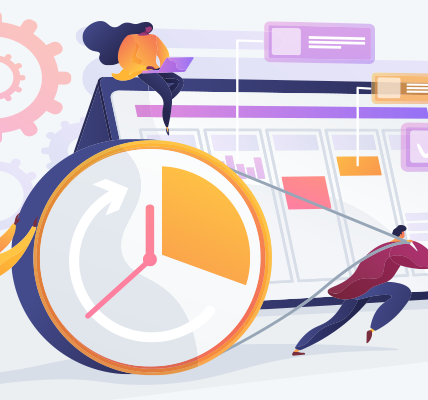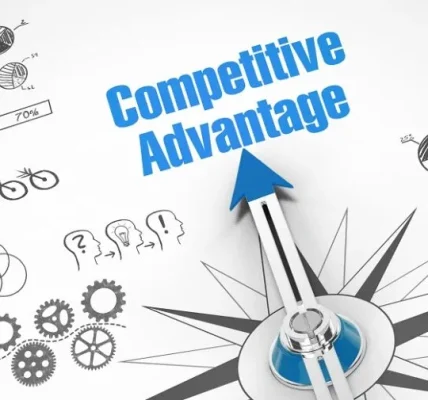Introduction: Why the Distinction Matters
Many founders, managers, and even seasoned executives use growth and scale interchangeably. That’s understandable — both concepts involve getting bigger. Yet the difference between growth and scale is critical: choosing the wrong path can drain cash, blow margins, and lead to operational chaos. In this article we’ll unpack what each term really means, compare them across metrics and business models, outline practical signs you’re ready to scale, and give step-by-step guidance on shifting from growth-focused to scale-focused strategies.
What Is Growth?
Growth refers to increasing revenue, customers, or output by adding proportional resources. When a company grows, it expands by doing more of the same: more salespeople, more manufacturing shifts, more servers, more office space.
Key characteristics of growth
- Linear resource-revenue relationship: To earn 100% more revenue you typically invest close to 100% more resources.
- High marginal cost: Each additional unit/customer often costs nearly as much as the previous one.
- Short- to medium-term orientation: Growth tactics are often focused on market capture, customer acquisition, and immediate revenue.
- People-heavy or input-heavy: Growth is commonly achieved by hiring more staff or increasing input volume.
Typical growth levers
- Hiring sales reps and account managers
- Opening new stores or production lines
- Increasing marketing spend to acquire customers
- Expanding product SKUs or geographic coverage
When growth is the right objective
- You’re validating product-market fit and need traction.
- The market is fragmented and low-risk to test acquisition channels aggressively.
- Investment capital is available and margins aren’t yet the primary concern.
What Is Scale?
Scale is about increasing revenue without a proportional increase in costs. A scalable business model means adding customers or revenue causes marginal cost increases — ideally close to zero — so profitability rises faster than revenue.
Key characteristics of scale
- Non-linear resource-revenue relationship: Revenue increases faster than costs.
- High operational leverage: Fixed costs are absorbed while variable costs per unit fall.
- Systems and automation-driven: Processes, technology, and repeatable frameworks enable handling more volume efficiently.
- Long-term orientation: Investments focus on durable advantages and repeatability.
Typical scaling levers
- Automation and SaaS tools that reduce manual labor per transaction
- Network effects (more users create more value for other users)
- Standardized onboarding and self-service models
- Platformization and APIs that let others build on your infrastructure
When scaling is the right objective
- Product-market fit is proven and acquisition economics are repeatable.
- The business requires operational efficiency to unlock profitability.
- You want exponential value capture from a limited set of resources.
Growth vs Scale — Side-by-Side Comparison
Business Focus
- Growth: Acquire more customers now.
- Scale: Serve more customers efficiently.
Cost Behavior
- Growth: Costs rise roughly in line with revenue.
- Scale: Costs grow much slower than revenue.
People & Processes
- Growth: Needs more people to handle more customers.
- Scale: Needs better processes and automation to handle growth.
Risk Profile
- Growth: Short-term risk of cash burn from high acquisition spend.
- Scale: Execution risk from system/process failures when volume spikes.
Examples by industry
- Retailer opening new stores = growth.
- E-commerce platform improving warehouse automation so order capacity doubles with marginal staff change = scale.
Real-World Examples: Seeing the Difference
Example 1 — Software as a Service (SaaS)
A SaaS startup adds 20% more customers by hiring sales reps and customer success managers — revenue grows, but support costs rise similarly. That’s growth. If instead the company builds a self-service onboarding flow and automates billing/support, it can onboard 200% more customers with a small support team increase — that’s scale.
Example 2 — Restaurant Chain
Opening five new locations increases revenue but also requires five sets of employees and managers — linear growth. Converting the business into a franchise model with standardized operations and training materials lets hundreds of outlets open without the parent company hiring proportional staff — that’s scaling.
Example 3 — Marketplaces
A marketplace gains value as more buyers and sellers join — network effects create scale because each new participant increases platform value without proportional cost.
The Financial View: Unit Economics & Margins
To decide whether to chase growth or scale, analyze unit economics:
- Customer Acquisition Cost (CAC) — how much to get a customer.
- Lifetime Value (LTV) — total future revenue from a customer.
- Gross Margin per unit — revenue minus direct cost.
If CAC ≈ LTV or margins are slim, aggressive growth can be harmful. Scaling improves LTV:CAC ratios because marginal costs fall and revenue per customer can increase with upsells, automation, and lower servicing costs. Focus on improving contribution margin (revenue minus variable costs) before pushing exponential top-line growth.
Signs Your Business Should Focus on Growth (Now)
- You’ve not yet validated repeatable demand in multiple segments.
- Onboarding and conversion show major manual touchpoints that inform product development.
- You need a larger sample to prove pricing, features, or channels.
- There’s a time-sensitive opportunity (e.g., first-mover advantage, competitor weakness).
In these cases, prioritize customer acquisition experiments, iterate on product features, and build a repeatable funnel. Expect costs to rise as you learn.
Signs Your Business Is Ready to Scale
- Your unit economics are positive and stable over time.
- Customer retention and repeat purchases are consistent.
- Acquisition channels are predictable and cost-effective.
- Operational bottlenecks are well-defined and automatable.
When these are true, invest in systems, platforms, and process redesign to enable handling larger volumes without hiring linearly.
How to Transition From Growth to Scale: A Practical Roadmap
1. Audit unit economics
- Measure CAC, LTV, gross margin, and payback period.
- Identify the most profitable customer segments.
2. Standardize and document processes
- Create playbooks for sales, onboarding, support, and operations.
- Turn tribal knowledge into repeatable SOPs.
3. Automate wherever manual work scales linearly
- Use CRM automations, customer self-service, and API integrations.
- Replace repetitive human tasks with software or outsourced standardized services.
4. Invest in architecture and technology
- Re-architect systems for concurrency and reliability.
- Build modular services, cloud autoscaling, and monitoring.
5. Measure operational leverage
- Monitor metrics such as revenue per employee, cost per transaction, and support tickets per 1,000 customers.
- Aim for improving these over time, not just headcount.
6. Align incentives and team structure
- Move teams from output-based targets (e.g., number of calls) to outcome-based metrics (e.g., ARR per segment).
- Reward automation and process improvements, not just raw activity.
7. Pilot-scale, then roll out
- Run small experiments to prove a scaling approach (e.g., a new self-serve funnel in one region) before global rollout.
Common Mistakes Companies Make When Trying to Scale
- Scaling too early: Attempting to scale before product-market fit leads to wasted investments and poor retention.
- Neglecting culture and talent fit: Systems change—people processes must follow or morale collapses.
- Ignoring edge cases: Automation that fails on rare but critical cases can break customer trust.
- Over-optimizing for cost: Cutting critical support or R&D to improve short-term margins can harm long-term growth.
Metrics to Track for Growth vs Scale
For Growth:
- Monthly Recurring Revenue (MRR) / ARR
- New customers per month
- Conversion rate by channel
- CAC by channel
For Scale:
- Revenue per employee
- Contribution margin
- Support cost per user
- Automation penetration (percentage of transactions handled without human intervention)
- Customer lifetime value growth over time
Organizational Changes That Support Scaling
- Create a Platform Team: Centralize common services and APIs so product teams don’t rebuild the same parts.
- Productize internal processes: Turn internal workflows into products that other teams can use.
- Decentralize execution, centralize standards: Let teams move fast but enforce shared SLAs and KPIs.
- Hire for systems thinking: Seek people who design reliable, maintainable processes and infrastructure, not just tactical operators.
Final Thoughts: Growth and Scale Are Complementary, Not Opposing
Growth and scale are not mutually exclusive — they are different phases and approaches in a company’s lifecycle. Start with growth to find product-market fit and customer behaviors. Transition to scale when your economics are proven and repeatable. The smartest leaders deliberately sequence these moves: they learn fast, stabilize fundamentals, then invest in systems that multiply value without linear cost increases.
Adopt the mindset that growth reveals truth and scale amplifies value. Use growth to discover, and scale to dominate.
FAQ
1. Can a business be both growing and scaling at the same time?
Yes. A business can be growing its top line while simultaneously improving operational leverage so the costs of that growth do not rise proportionally. Early-stage companies often grow without scaling; mature companies often manage both.
2. How do I know if my CAC is sustainable for scaling?
Check CAC relative to LTV and payback period. If CAC payback is short and LTV:CAC is comfortably above 3:1 (industry-dependent), you have room to scale. Also ensure retention and gross margins remain stable as you grow acquisition budgets.
3. Is automation the only way to scale?
No — automation is a major lever but not the only one. Network effects, platform models, outsourcing, and standardized franchise or partner models can also enable scale.
4. What’s a quick test to know if I should stop hiring and focus on systems?
If revenue per employee has plateaued or is declining despite rising headcount, you should prioritize systems, processes, and productivity over more hires.
5. Are there industries where scaling is inherently harder?
Yes. Industries with high variable costs per customer (e.g., bespoke manufacturing, heavy utilities) face structural challenges. However, even these businesses can find scale through process improvements or platformization of parts of the value chain.
6. How should investment strategy change between growth and scale phases?
During growth, invest in customer acquisition experiments and product iteration. During scale, shift capital toward technology, automation, and process engineering that improve margins and throughput.
7. What cultural traits help companies scale successfully?
A culture that values systems thinking, documentation, continuous improvement, and shared standards helps. Teams should celebrate automation wins and process improvements as much as raw sales victories.








